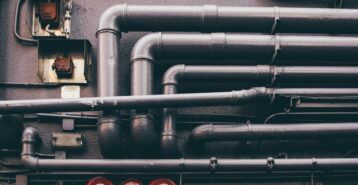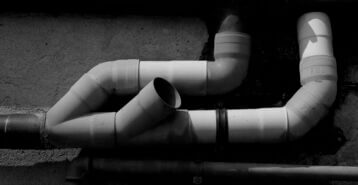Comprehensive Guide to Gas Line Plumbing
These days, several essential appliances in our homes are powered by gas. Plumbing for gas lines makes our stoves, water heaters, fireplaces, and furnaces work. However, there are inherent risks associated with gas lines, and their installation and maintenance are best left to the professionals. In this guide, we’ll discuss the purpose and function of gas line plumbing, as well as how to keep them working properly for a safe home.
Introduction to Gas Line Plumbing
Gas line plumbing refers to a system of pipes and other components that deliver natural gas or propane to a home or building. These systems supply the necessary fuel for appliances such as stoves, water heaters, and fireplaces, making them a crucial part of your home’s infrastructure. Proper installation of these gas lines, along with their regular maintenance, is essential to ensure the safety, efficiency, and longevity of your gas-powered appliances.
Common Uses for Gas Lines
Gas lines are used in various applications within homes and commercial buildings, including:
- Heating: Gas is commonly used to fuel heating systems, such as furnaces and boilers, providing warmth to homes and buildings during colder months.
- Cooking: Gas stoves and ovens are favored by many cooks for their precise temperature control.
- Water Heating: Many homes use gas water heaters to supply hot water for everyday needs such as showering, laundry, and dishes.
- Fireplaces: Gas-powered fireplaces offer warmth and ambiance without the need for wood or coal.
- Gas Generators: Used in emergencies, gas generators can often be connected to municipal gas or propane gas to be used in the event of power outages in your home.
- Outdoor Kitchens and Grills: These increasingly popular home entertainment features are often compatible with gas.
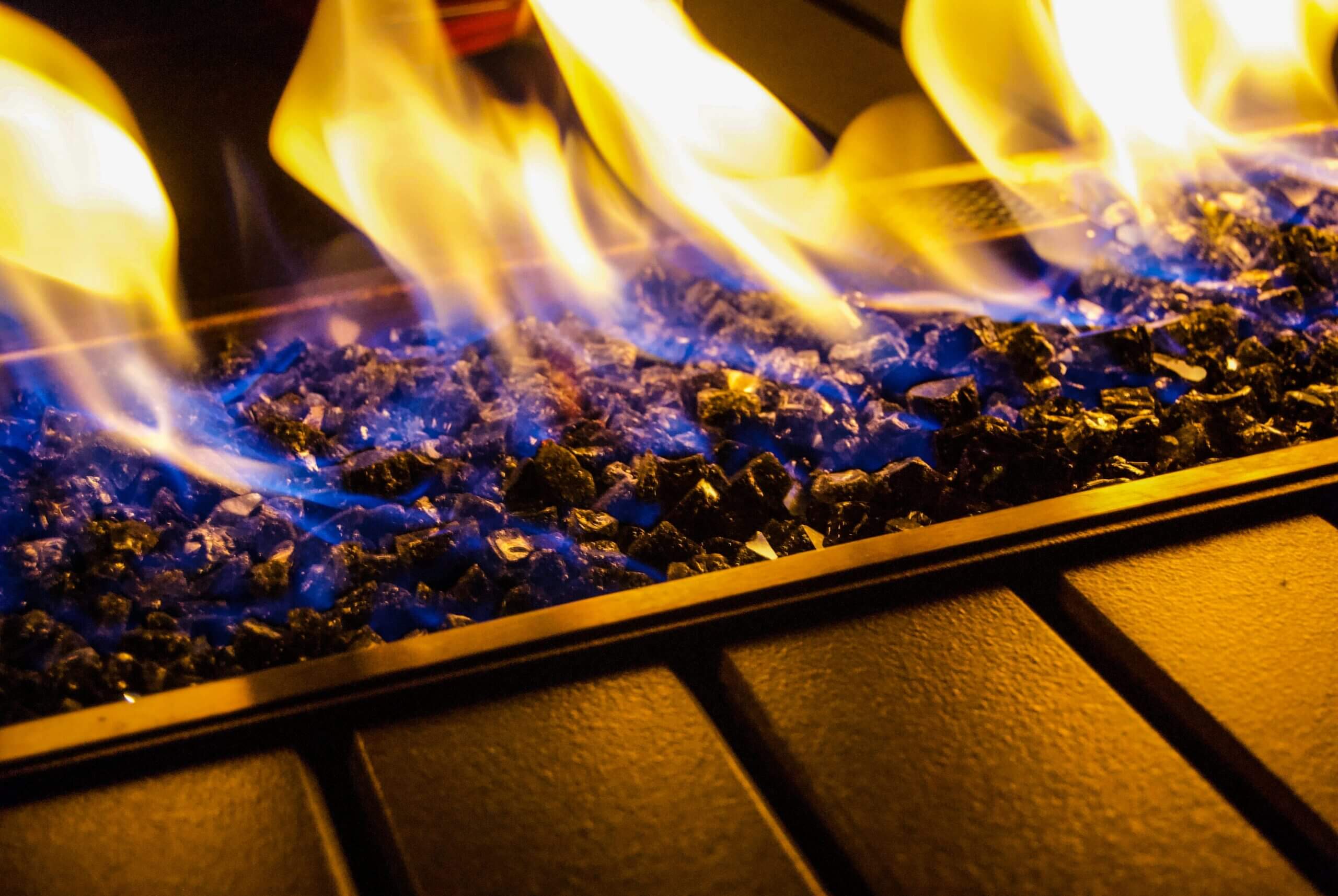
Importance of Proper Installation and Maintenance
Gas lines are highly sensitive and must be correctly installed to prevent leaks and other dangerous situations. Poorly maintained gas lines can lead to fire hazards, carbon monoxide poisoning, and even explosions. Therefore, it is essential to ensure proper installation, regular inspections, and immediate action at the hint of a problem.
How Gas Line Plumbing Works
Gas Supply: Municipal vs. Propane
Gas is typically supplied to your home in one of two ways: through a municipal natural gas supply or from a propane tank.
Municipal gas supplies provide natural gas to homes through underground pipelines that connect to a larger distribution network within your municipality.
Propane tanks are used when municipal gas lines are not available. These tanks must be regularly filled and require specific plumbing connections to ensure proper function.
How Gas is Distributed
Gas is distributed through your home’s plumbing system at a regulated pressure to ensure that appliances receive the correct amount for optimal performance. Pressure regulators control the flow of gas, ensuring it reaches appliances safely and efficiently.
The gas travels through a network of pipes made of materials like steel, copper, or plastic, from the gas meter to various appliances in the home. When a gas appliance is turned on, gas begins to flow through the connected pipes to the appliance, where it is burned to produce heat or energy.
Main Components of a Gas Line System
Understanding the key components of a gas line system is vital for homeowners to ensure safety and efficiency.
Pipes: Gas pipes are the backbone of any gas line system because they are responsible for delivering the gas to each appliance. These pipes are typically made with materials such as steel or copper, which are durable and resistant to the pressure and temperature changes associated with gas flow.
Valves: Valves control the flow of gas throughout the system. Shut-off valves allow homeowners or professionals to stop gas flow in an emergency and during routine maintenance of the system. Shut-off valves are placed at each appliance. There is also a main shut-off valve which stops the flow of gas into the home from the source.
Connectors and Fittings: Connectors and fittings are used to join different sections of the gas line, allowing for safe and secure connections between pipes and appliances aimed at avoiding leaks and maintaining proper pressure.
Gas Meters: A gas meter measures the amount of gas used by a home so gas utility companies can bill homeowners. These meters are also useful in monitoring the overall health of your home’s gas lines.
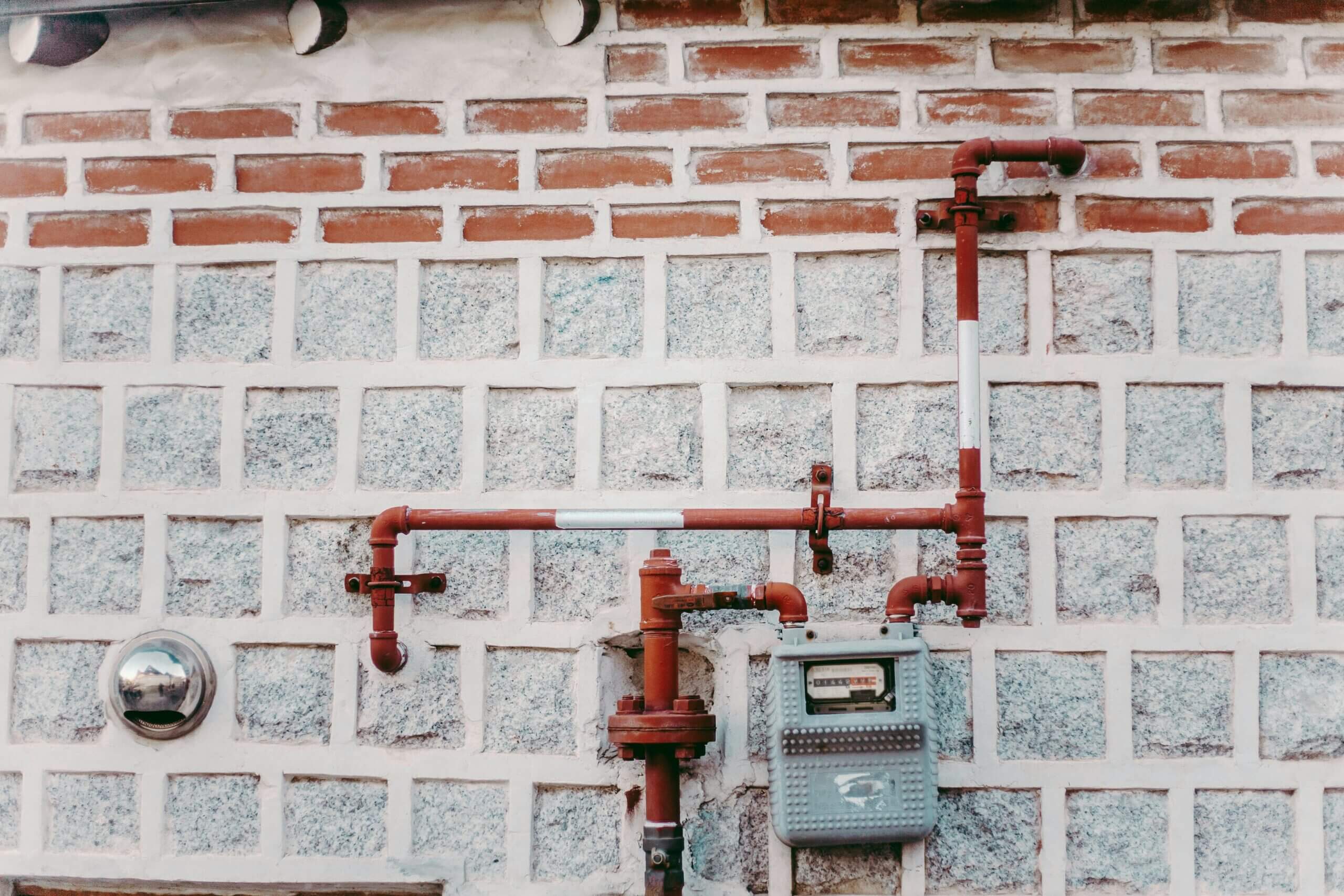
Gas Line Safety Precautions
Gas line installations and maintenance must adhere to local codes and regulations, which vary depending on your location. These codes are designed to protect residents from gas-related accidents, and homeowners should ensure that any gas line work is done by a licensed professional.
Gas leaks are one of the most serious risks associated with gas line plumbing. Small and large leaks can lead to explosions, fires, or poisoning from carbon monoxide.
Carbon monoxide, or CO, is a colorless, odorless gas that can be deadly to humans and pets alike. Installing carbon monoxide detectors in key areas of your home will help to alert you to dangerous levels of CO in the air, preventing poisoning and further complications of leaks.
Signs of a gas leak include:
- Rotten egg scent due to sulfur compounds added to natural gas for detection
- Hissing sounds heard near pipes or appliances.
- Dead vegetation near your outdoor gas lines.
If you suspect a gas leak, follow these guidelines:
- Evacuate the building immediately.
- Avoid using open flames or electrical devices such as lighters and anything generating a spark, as these can cause an explosion,
- Contact a licensed professional to inspect and repair the leak. In many cases, contacting the local fire department should be your first move.
- Shut off the gas supply at the main shut-off valve if possible.
Gas Line Maintenance & Inspections
Routine inspections are crucial for detecting potential issues such as corrosion, wear, or leaks. A licensed professional should inspect your gas line system every few years to ensure it is in good working order. These professionals can also ensure that your gas lines have been properly installed according to your local regulations and city code requirements.
How to Test for Leaks
- Soap bubble test: A simple way to check for leaks is by applying soapy water to the joints and connections of the gas lines. If bubbles form, it indicates a leak.
- Pressure tests: A professional can perform a pressure test to assess the integrity of the entire gas line system.
Signs That Gas Lines Need Repair or Replacement
Look for signs that your gas line may need repair or replacement:
- A faint odor of gas in the home or near the pipes.
- Hissing or whistling sounds from your gas lines.
- Aging systems, especially in systems made of steel, often need repair and replacement as these systems can corrode over time.
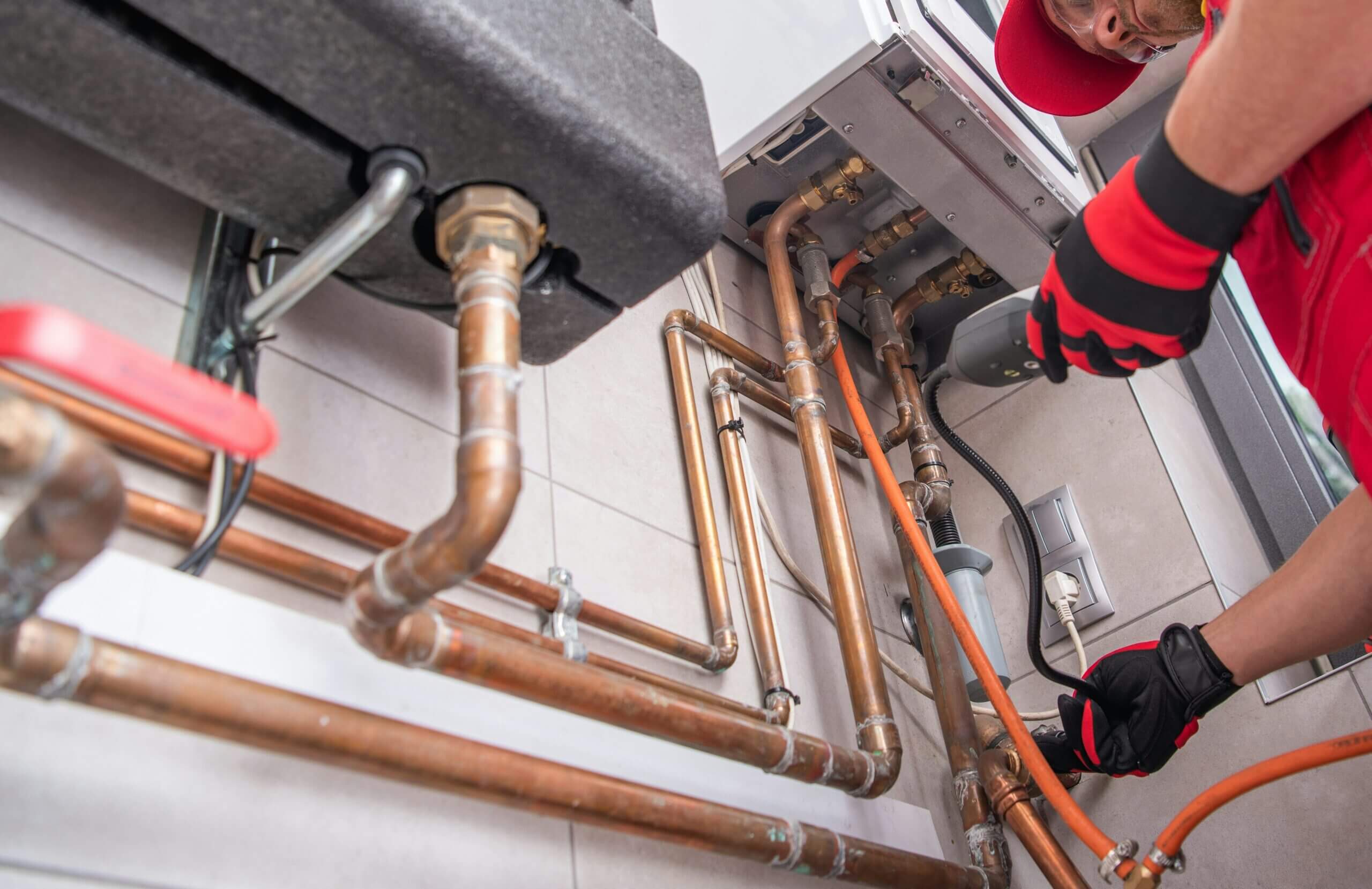
Gas Line Installation & Repair
When Installation Is Required
Gas line installation may be required in several situations, including:
- New Builds: New construction projects often require gas line installation for heating, cooking, and hot water.
- Appliance Upgrades: Installing new gas-powered appliances may require extending or upgrading the existing gas line. The same goes for switching from electric to gas appliances.
- Outdoor Gas Lines: For appliances like gas grills or outdoor fireplaces, you may need to install new gas lines leading to the exterior of the home.
Installation Steps
Gas line installation involves several key steps. A professional plumber will plan the route for the gas line, ensuring it meets all safety codes and regulations. If the line needs to go underground, trenches are dug to lay the pipe. Finally, the gas line is connected to the appliance and tested for leaks and pressure compliance.
Modern gas lines and appliances often come with smart home features that can identify and alert you to potential leaks and maintenance needs. In addition, newer appliances are often safer and more efficient when it comes to using gas.
Repairing vs. Replacing Gas Pipes
Sometimes, gas lines can be repaired by replacing a section of the pipe. However, if the entire system is old, corroded, or severely damaged, a full replacement might be necessary. A licensed professional can help determine your best course of action.
Gas line installation and repair costs vary depending on factors such as:
- The length of the pipe.
- The type of material used, whether steel, copper, or flexible gas lines.
- The complexity of the installation, for example, if the gas line needs to be run underground.
- Labor costs in your area.
- The number and type of appliances in your home.
Emergency Gas Line Issues & When to Call a Professional
Certain situations require immediate professional intervention, including:
- Strong gas odor or a sudden increase in smell.
- Sudden pressure changes in the gas system.
- Pilot lights going out frequently or unexpectedly.
Gas line work is dangerous and should always be handled by licensed professionals with the proper tools and expertise. Improper work can lead to leaks, explosions, and other hazardous situations.
When searching for a gas plumber, ensure that they are licensed, insured, and experienced in working with gas lines. Check reviews and ask for references to find someone you can trust. In many cases, your homeowners’ insurance company can recommend a contractor to come out and inspect your property.
Need help finding a trusted professional? Modernize can connect you with licensed, local plumbers who specialize in water supply systems and plumbing repairs.
Conclusion
Gas line plumbing is essential for the safe and efficient operation of various household systems, from home heating to cooking. By understanding its components, safety precautions, and maintenance requirements, you can ensure that your gas line system remains in top working condition. Prioritize safety by calling a professional or emergency services if you suspect an issue with your gas lines.
Compare top-rated plumbing pros in your area.
Read real homeowner reviews, explore qualifications, and view promotions. Modernize makes it easy to browse professionals and find one that will be perfect for your project.

